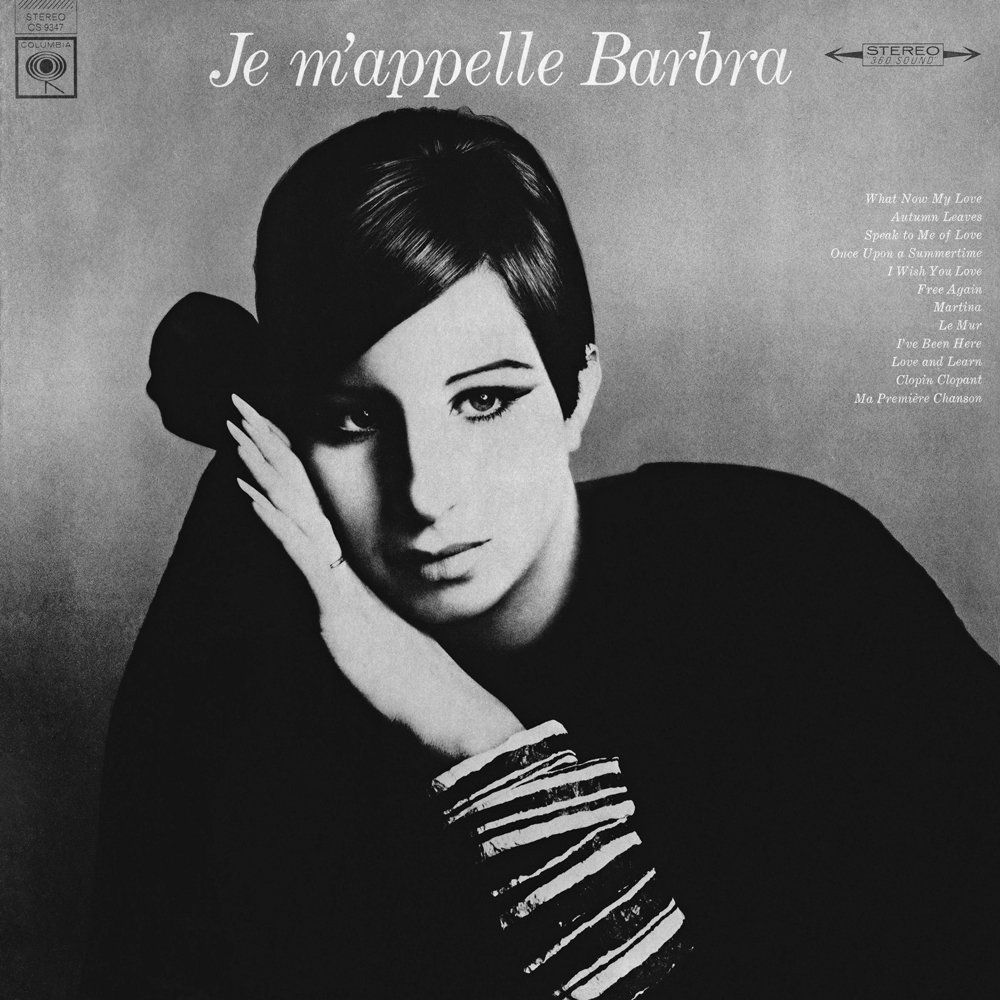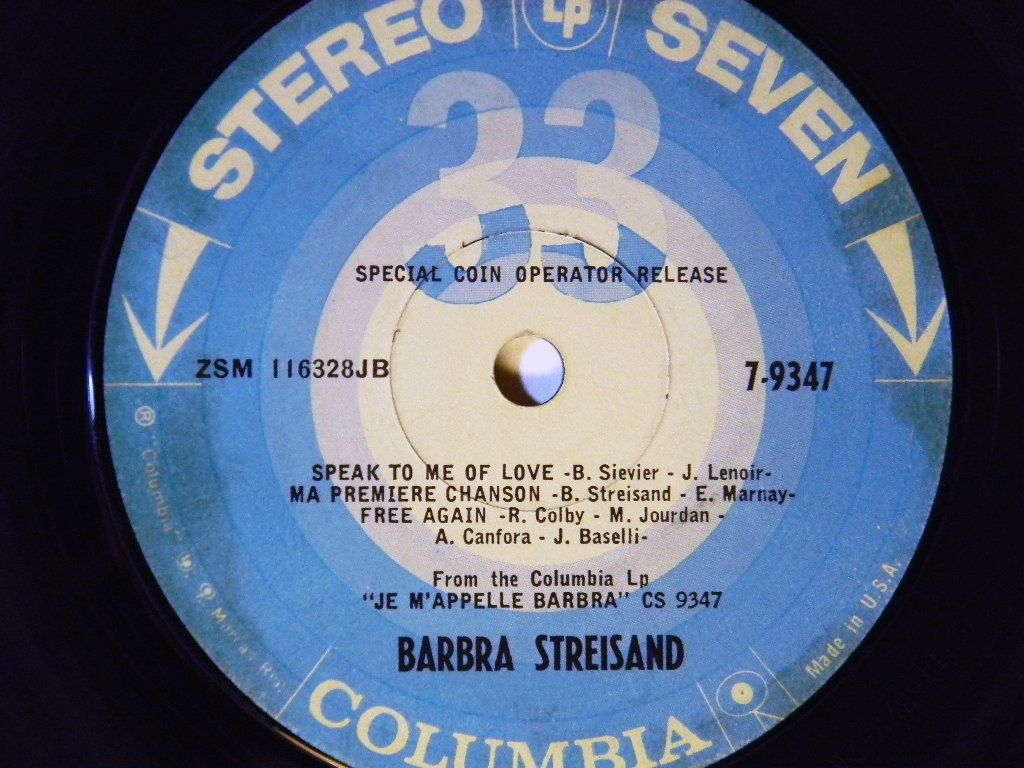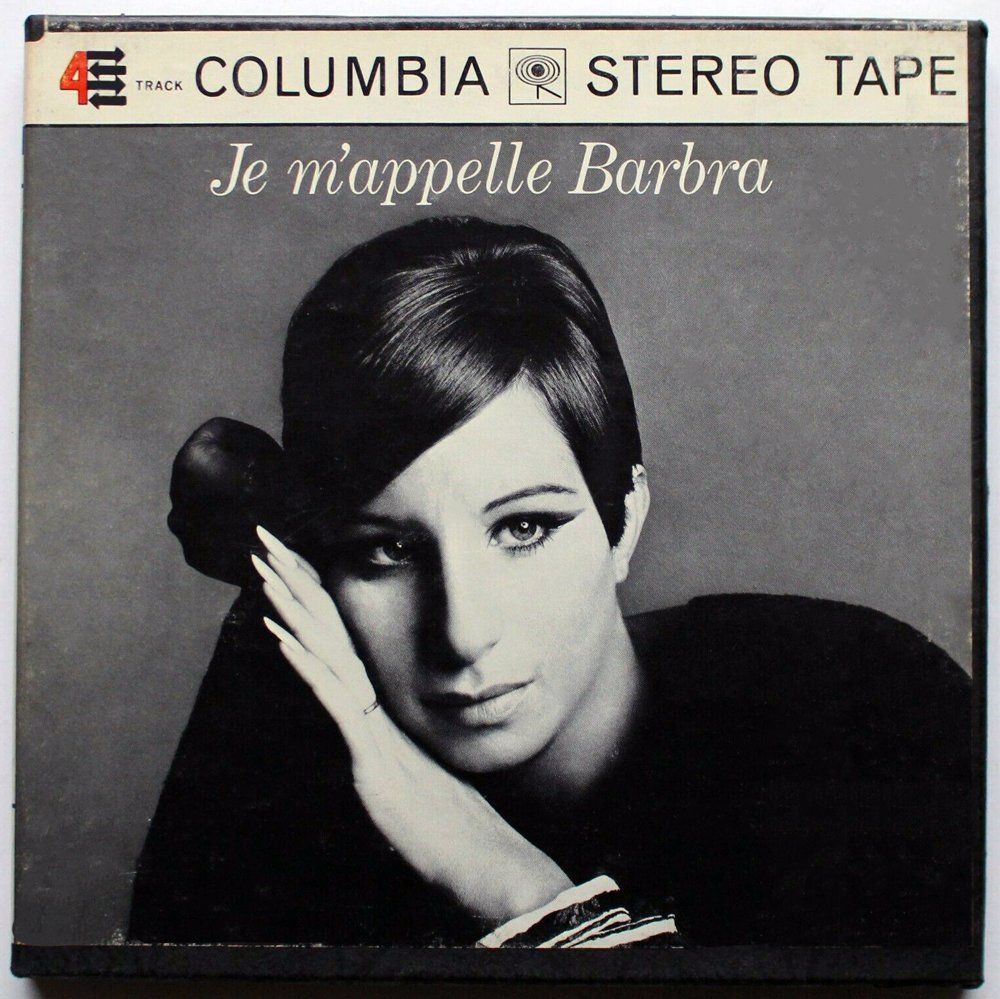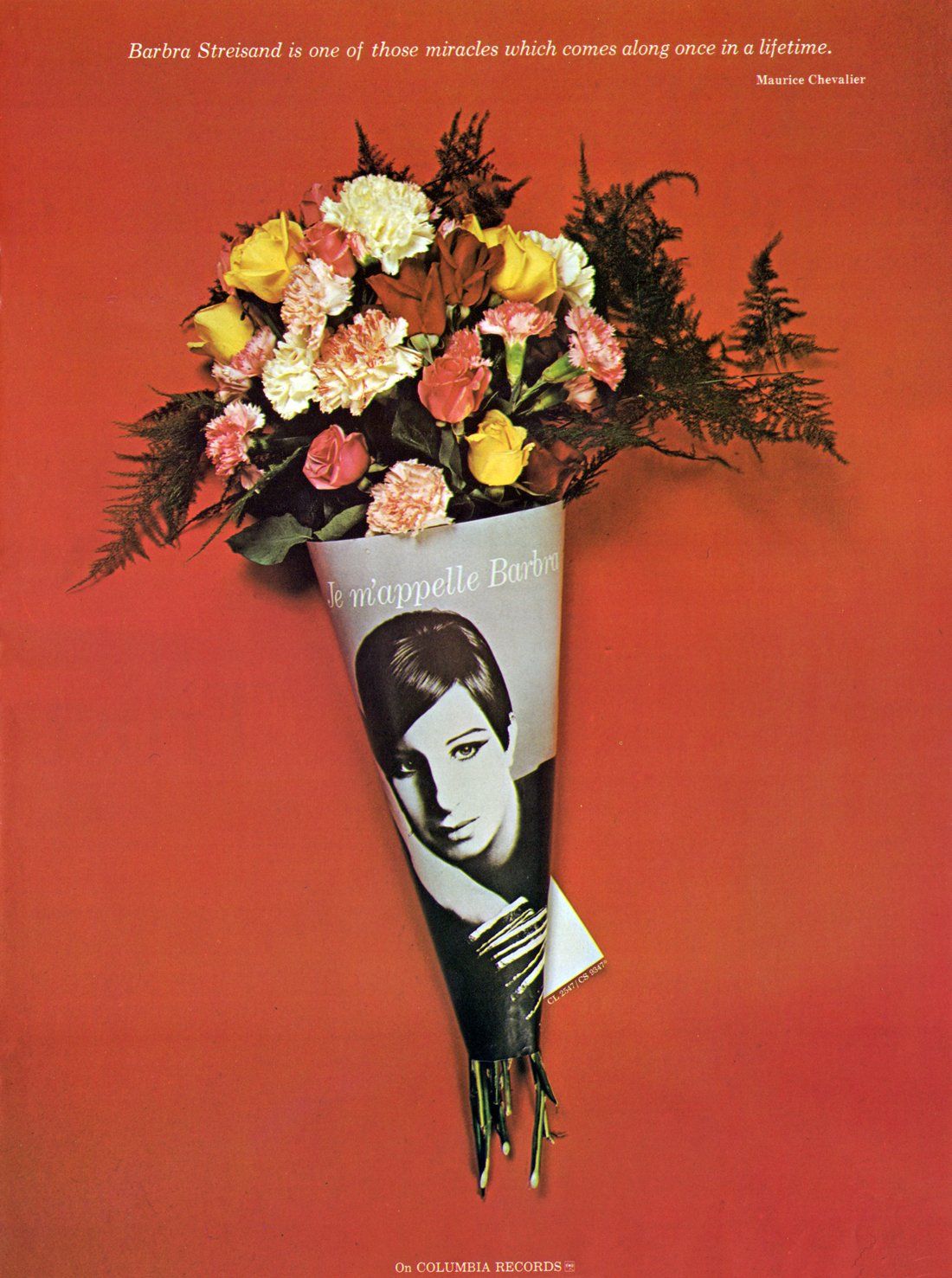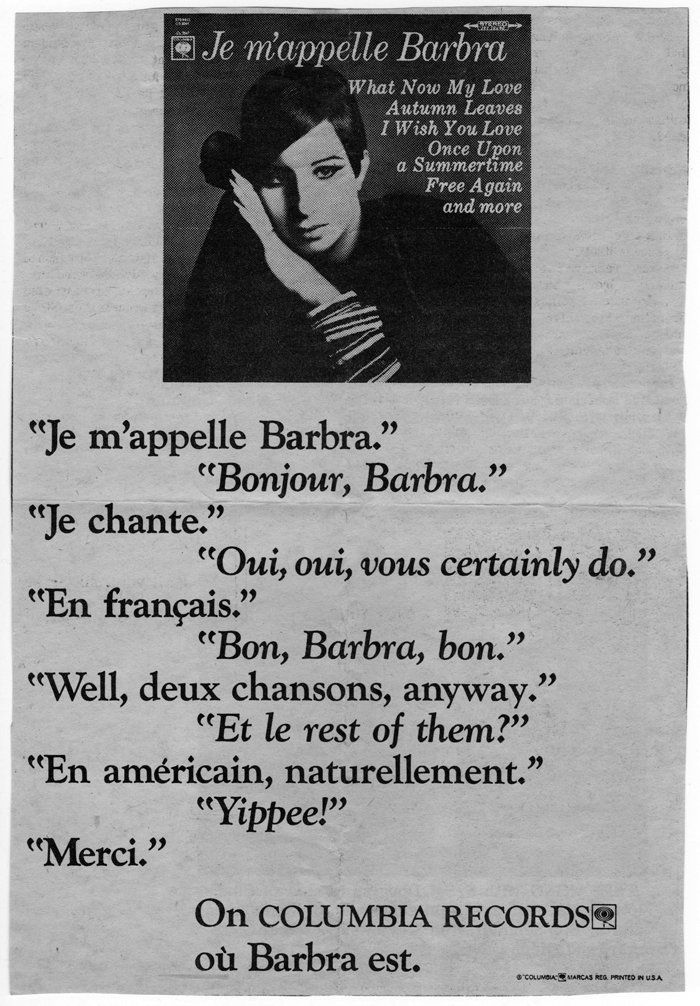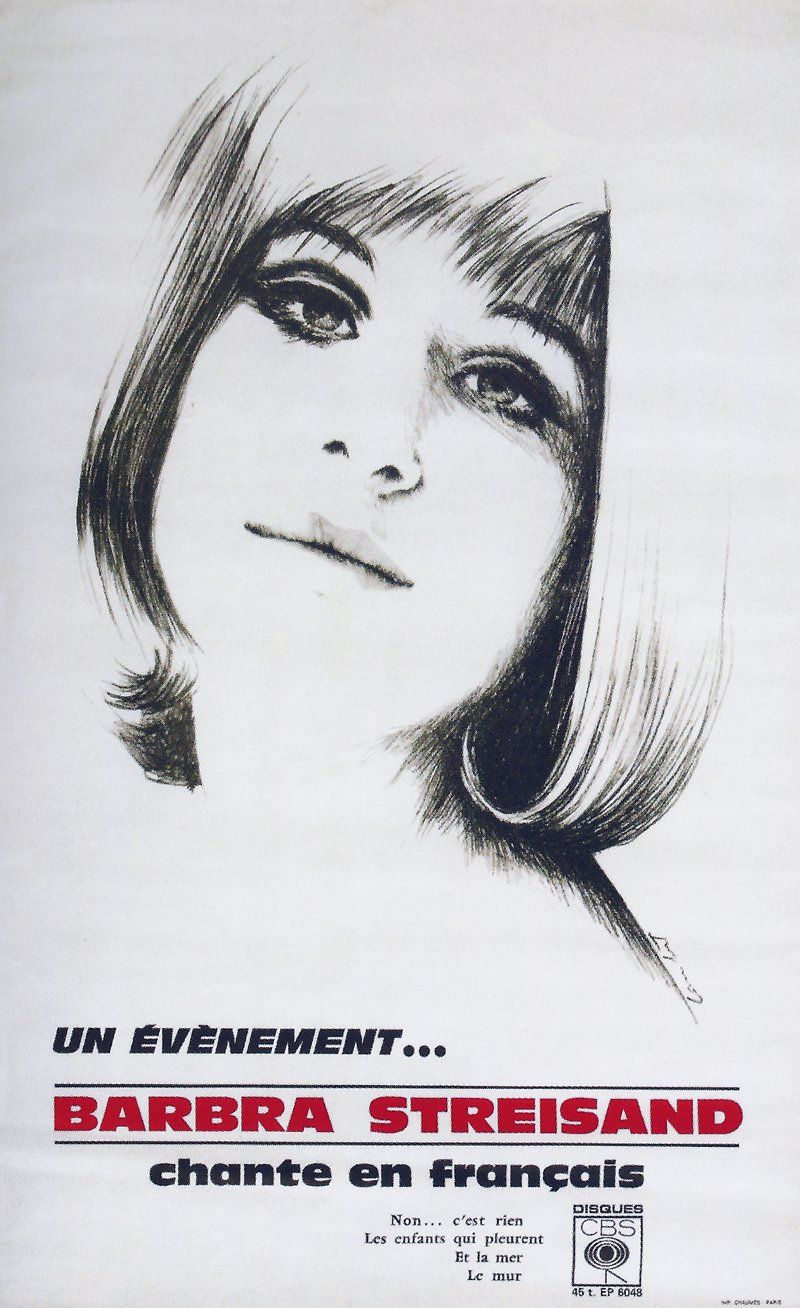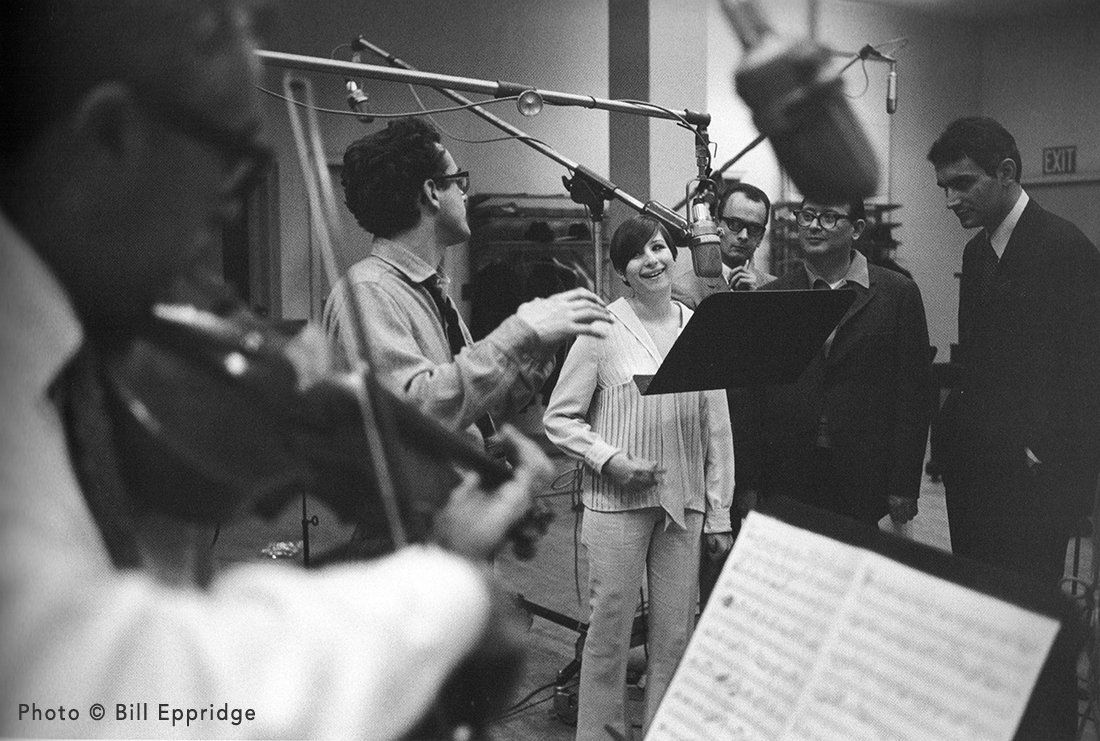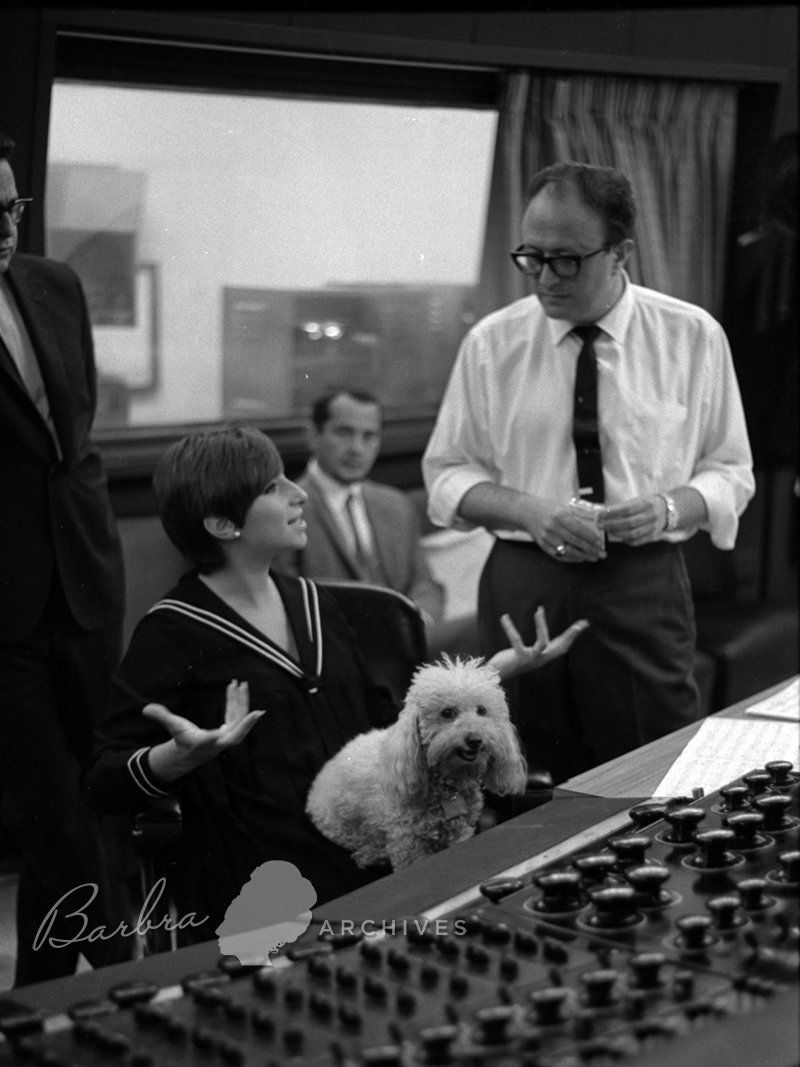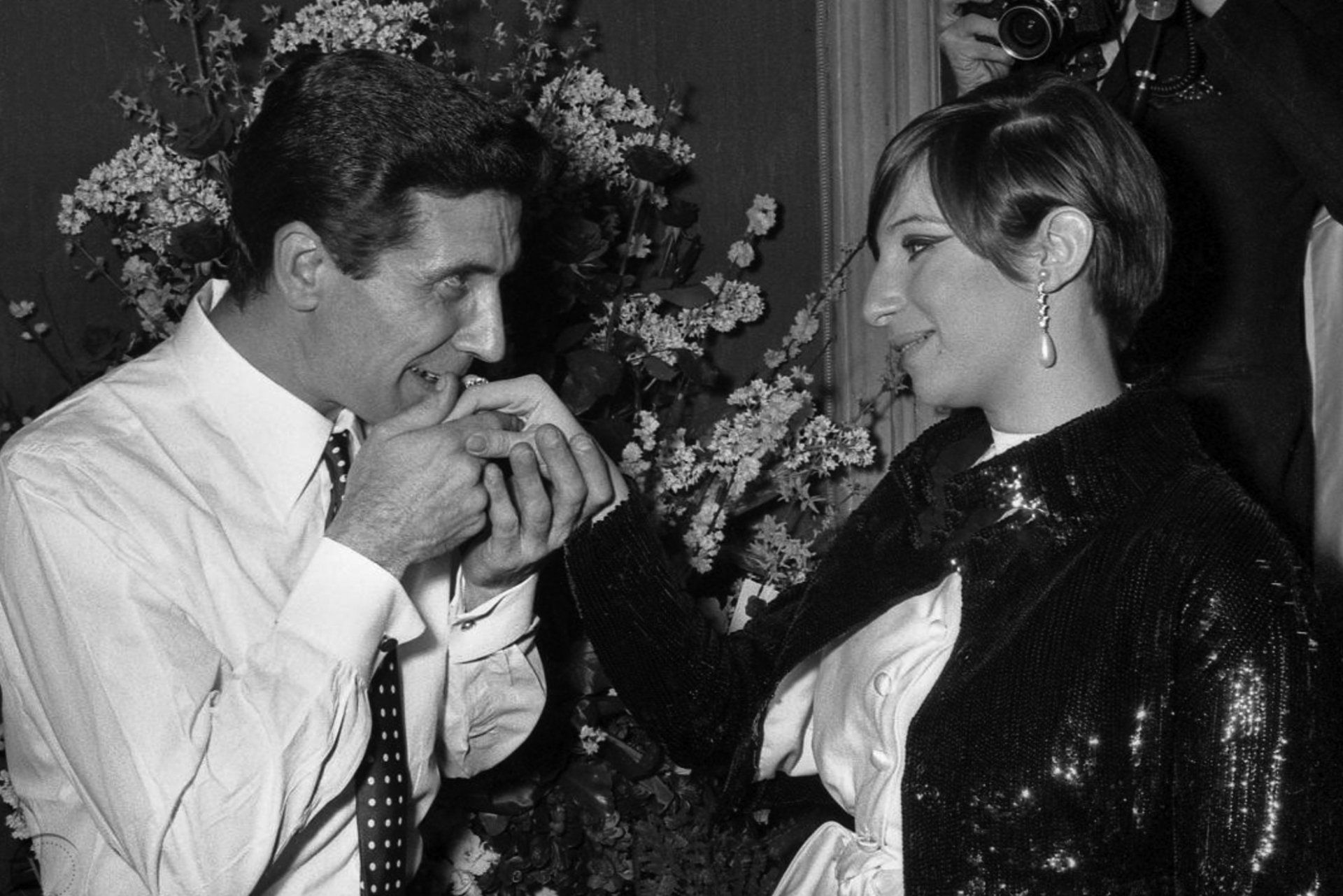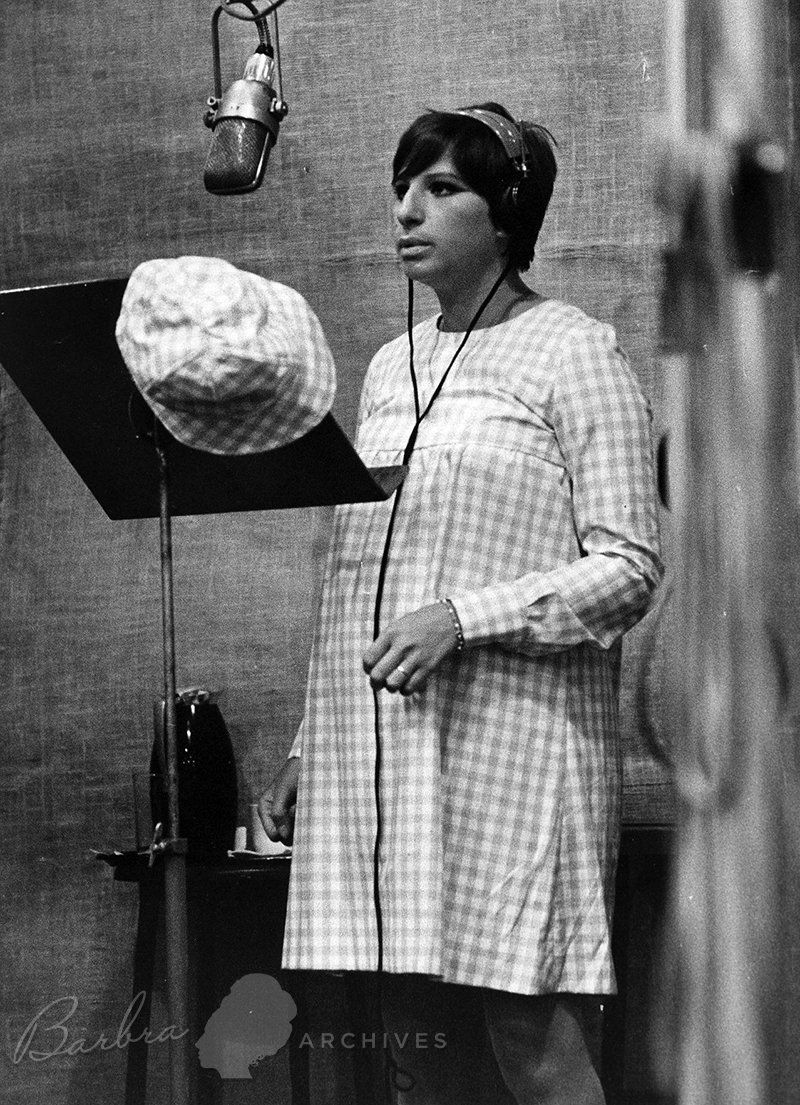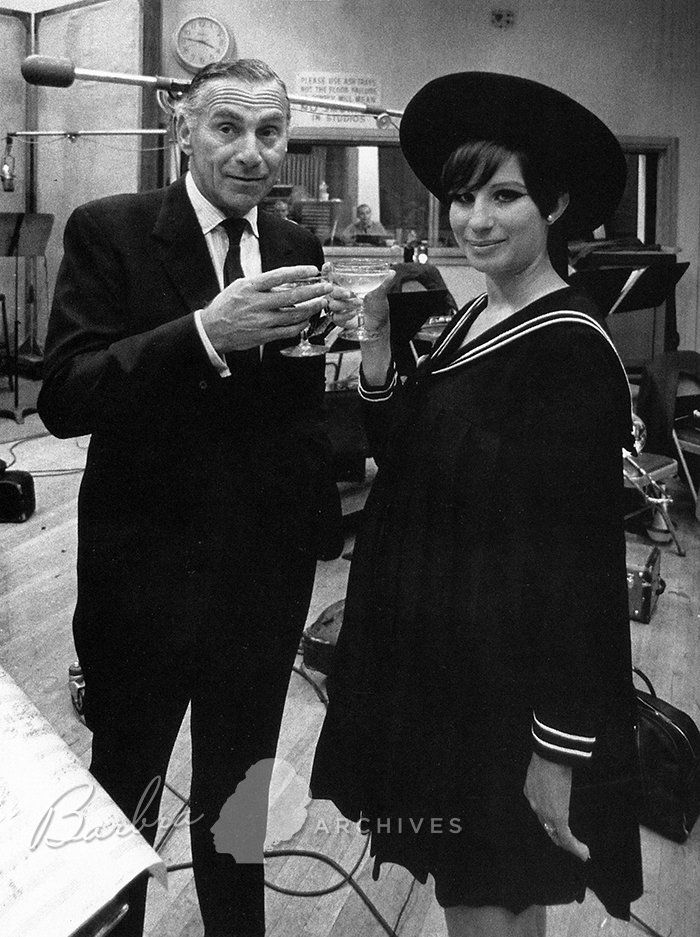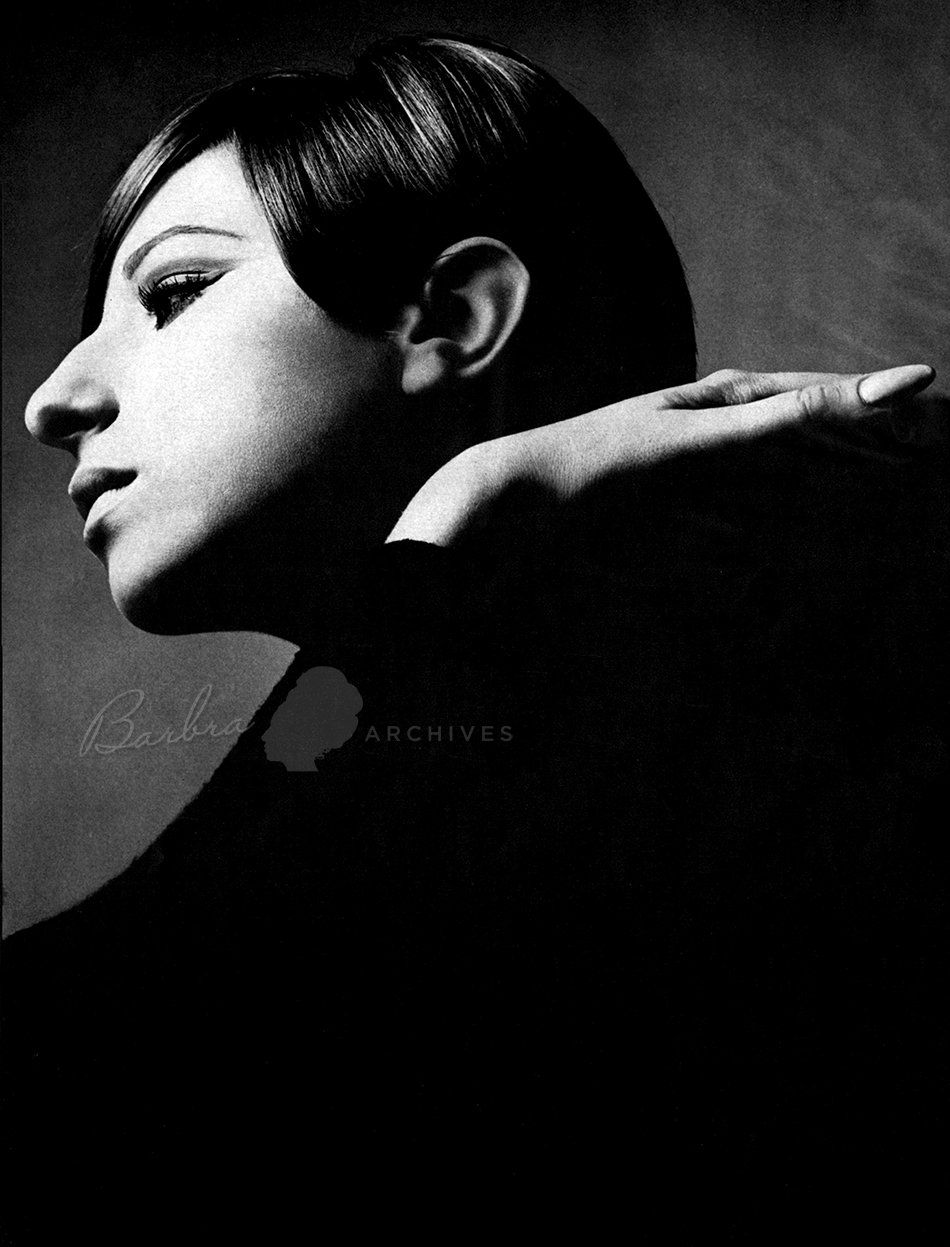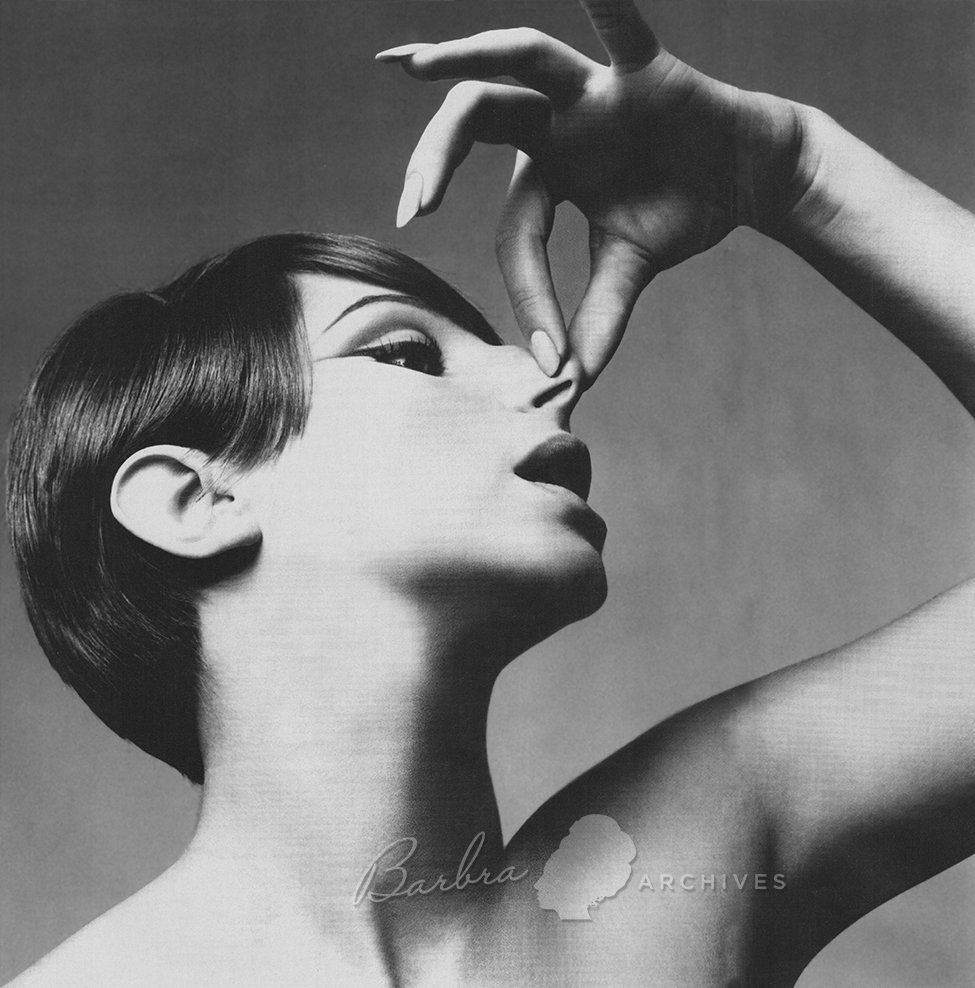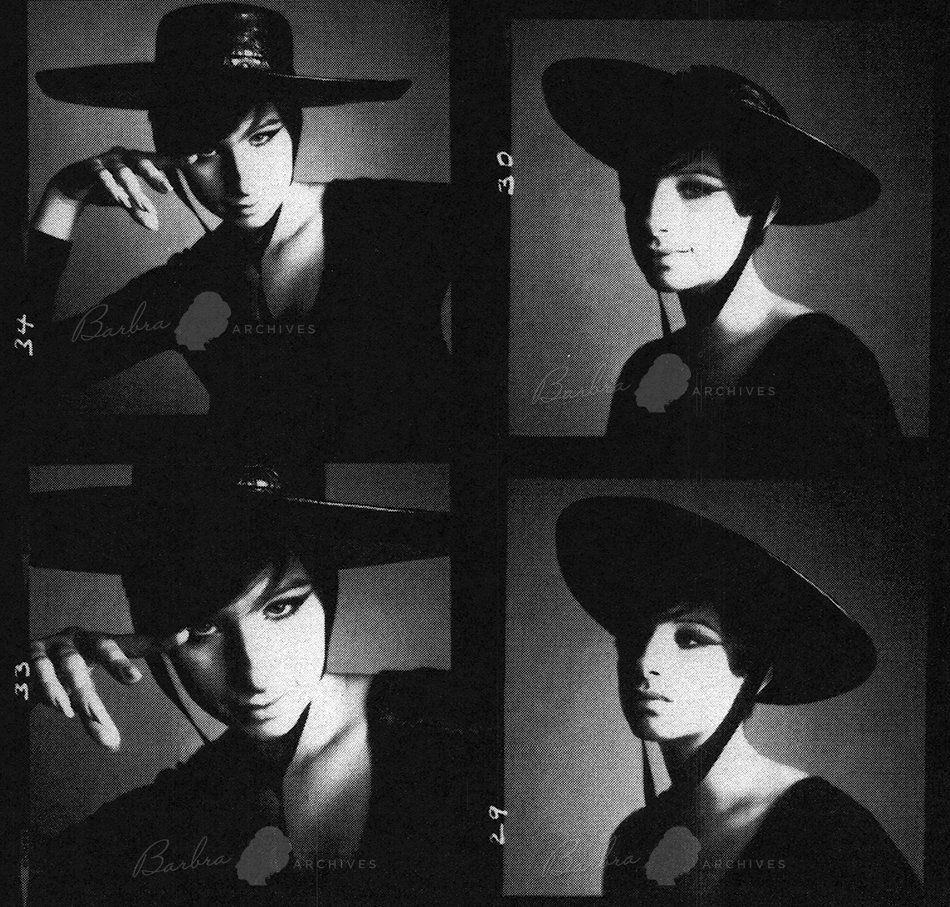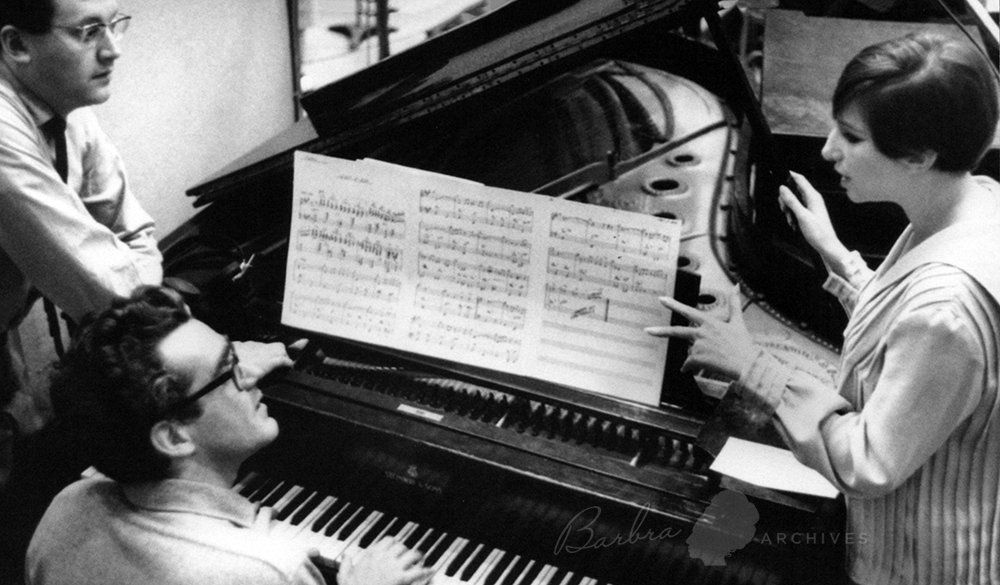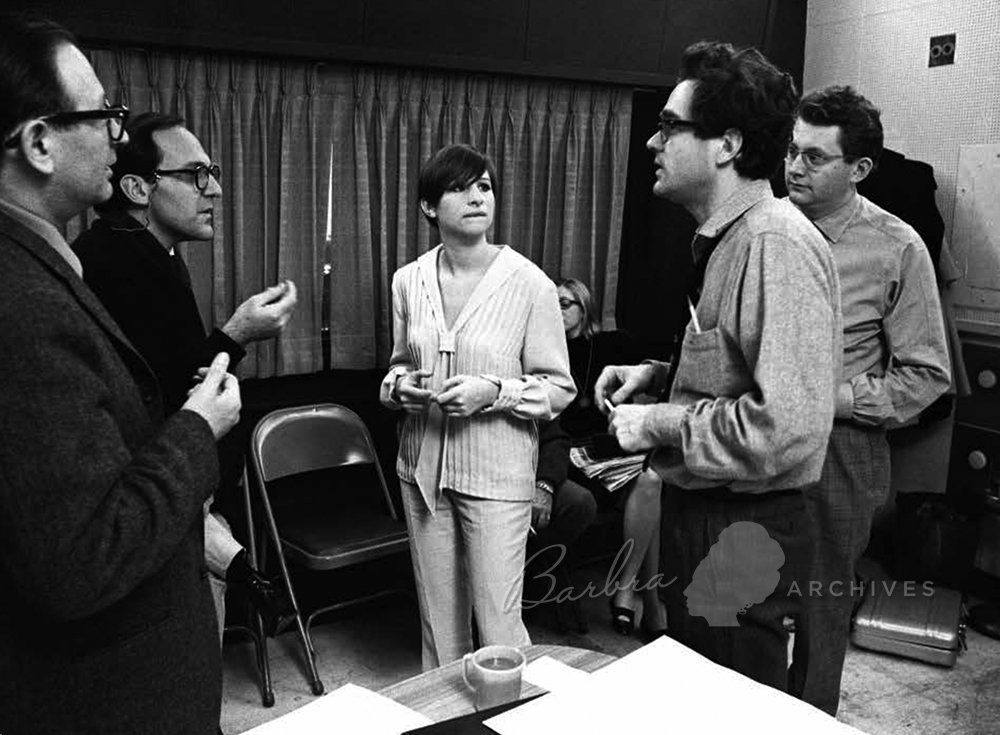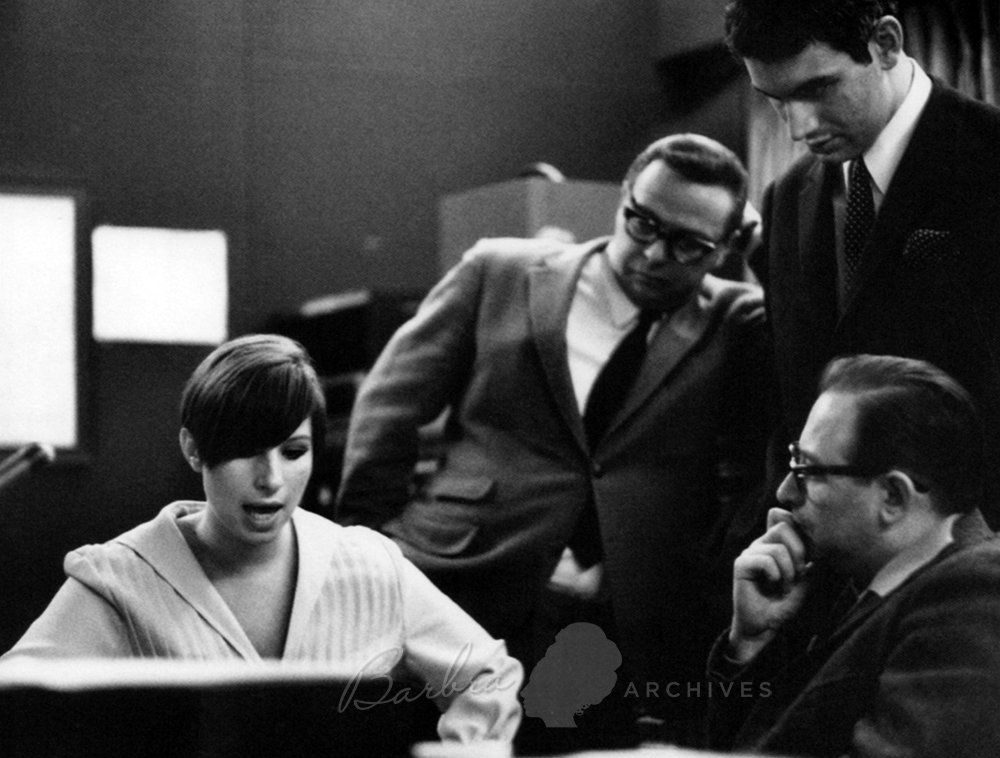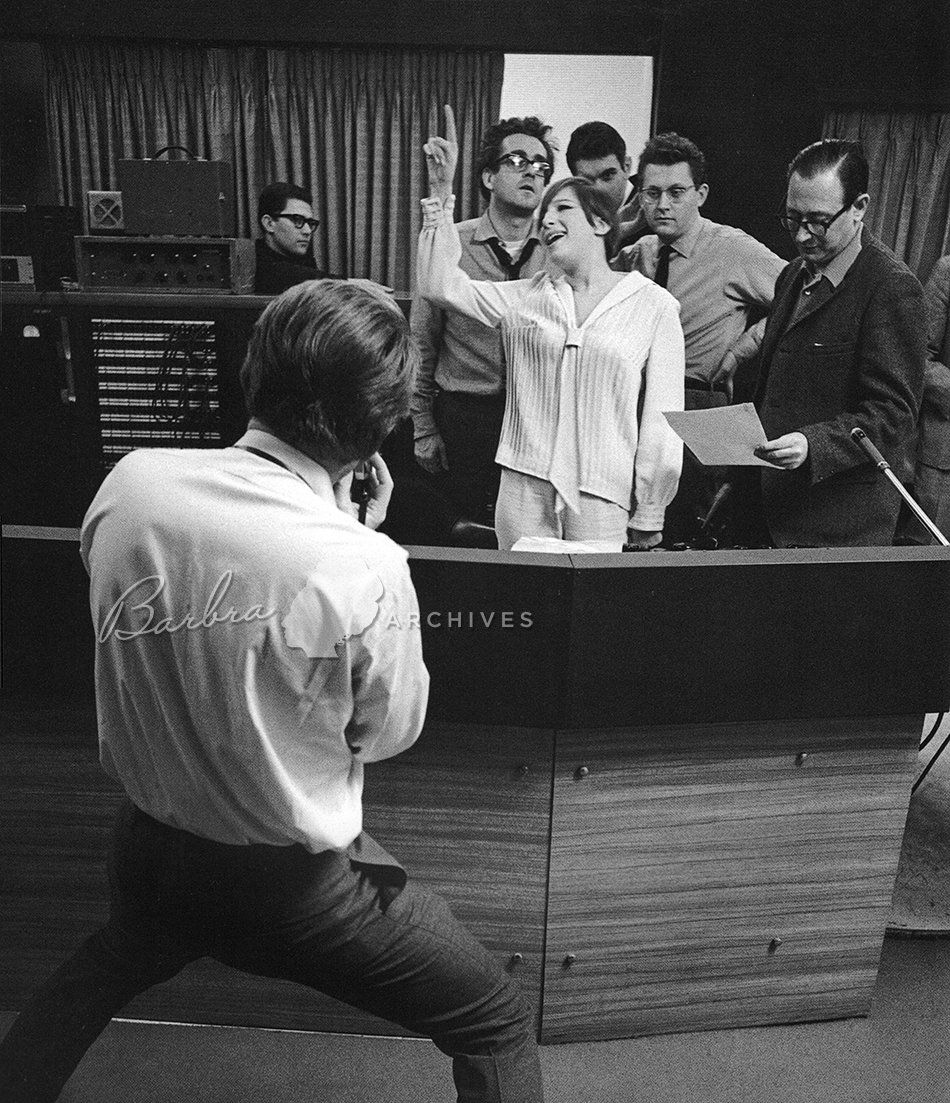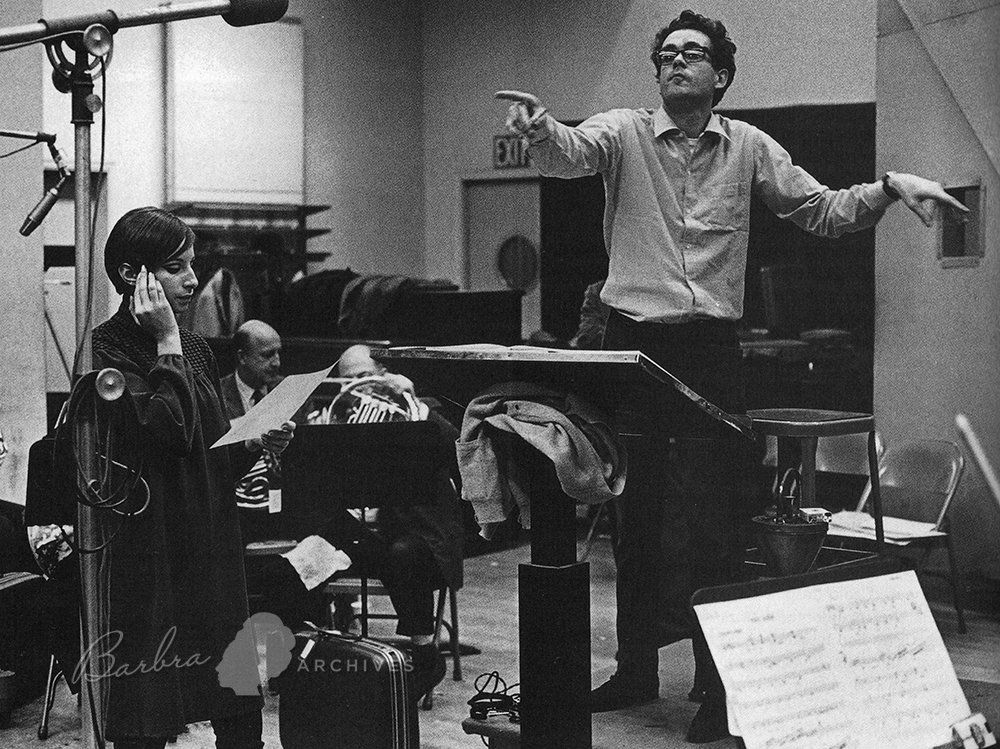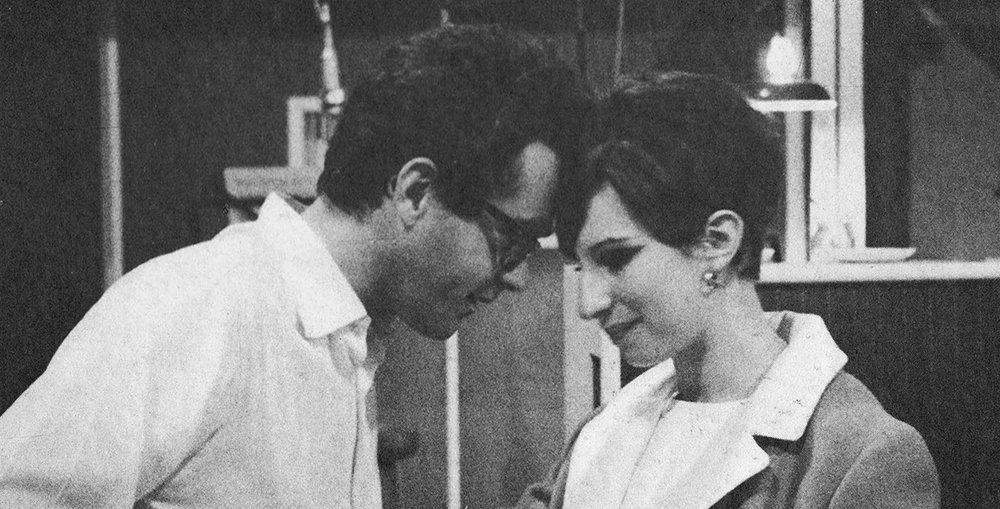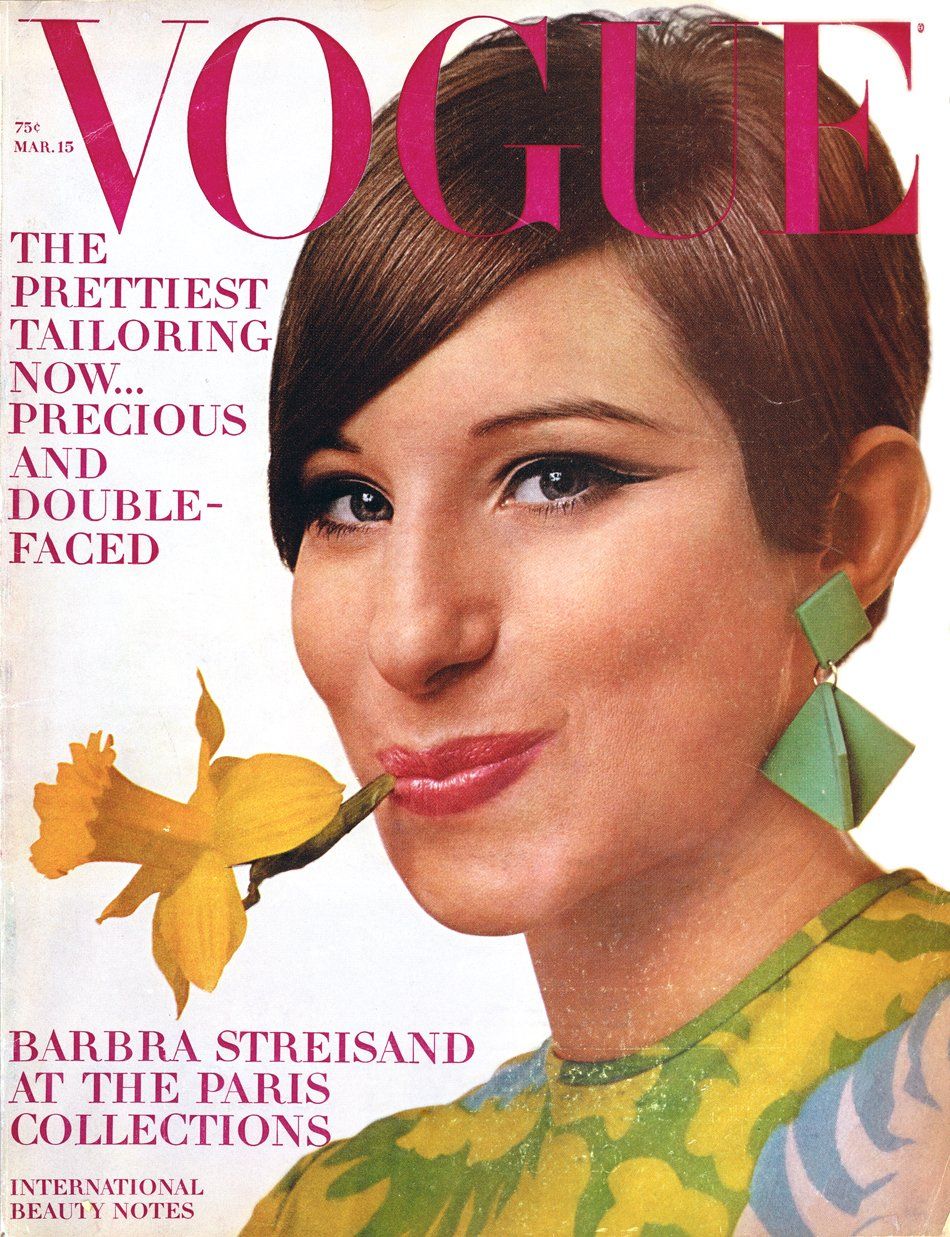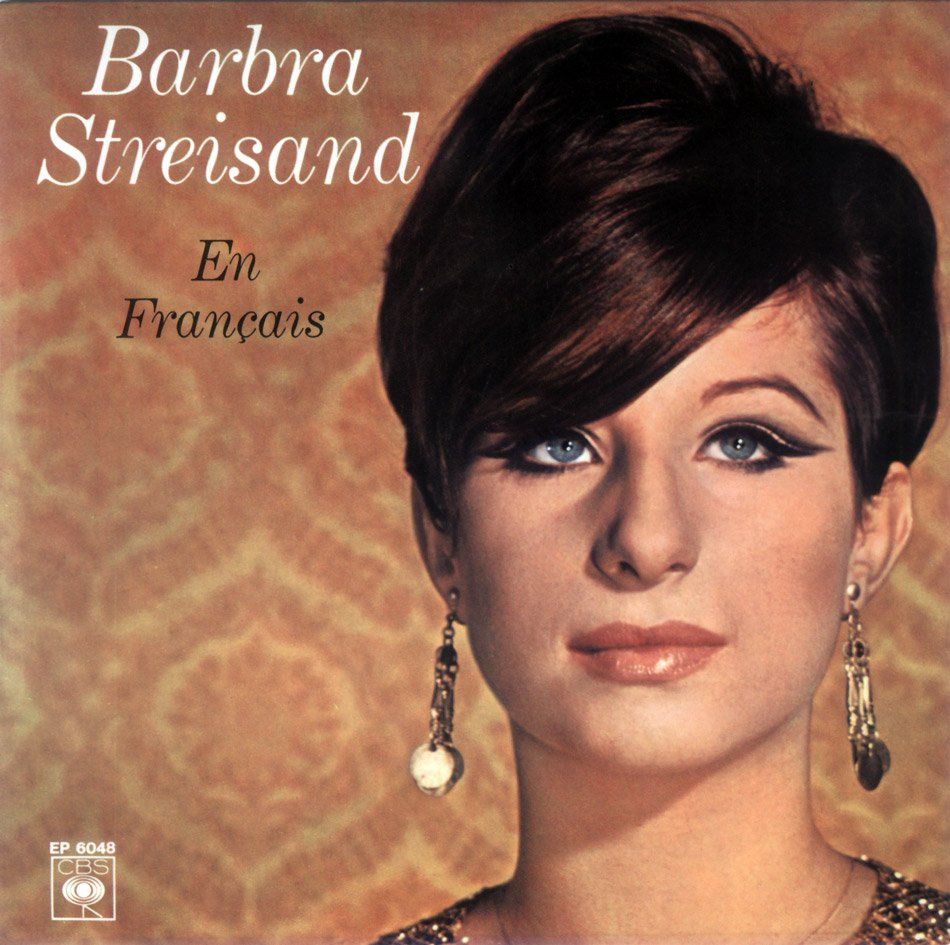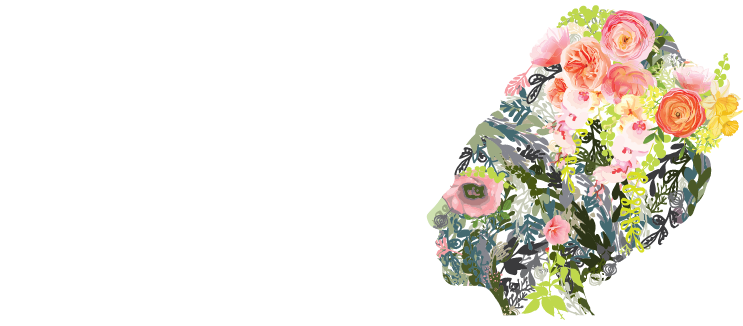Barbra Streisand’s 1966 album, Je m'appelle Barbra, was both an artistic highlight of her three-year recording career as well as the beginning of a highly creative and enduring collaboration with French composer, arranger, and conductor Michel Legrand. The album was created during a particularly busy time in Barbra’s career and personal life – between television specials, the Funny Girl play, and the birth of her son.
Nat Shapiro was the director of Artists and Repertoire for Columbia Records’ International Department in 1965 and spoke with Barbra about expanding her popularity in Europe. “She agreed with me that French was classier than Italian,” Shapiro recalled. “They had more sophisticated songs and songwriters. Also, we had a much more active company in France [Disques CBS]. Another strong factor was Michel Legrand. He was one of the best composers and orchestrators in the world. He had just written the music for The Umbrellas of Cherbourg … That appealed to Barbra.”
Michel Legrand elaborated on the genesis of the project: “[Nat Shapiro] was working for Columbia Records at the time, and Barbra had just recorded two albums under the title My Name is Barbra. They thought of doing a third album of French songs with the title Je m'appelle Barbra....”
Ettore Stratta was manager of international A&R and creative services for CBS Records International (Columbia Records’ international organization for distributing its records). “I was producing recordings by American artists singing in foreign language for the foreign markets,” he recalled. “And it the idea [came] that we would do an EP— four songs— with Barbra in French.”
Legrand flew to New York in the Spring of 1965. “I met Barbra at night after a performance of Funny Girl,” he wrote. “She had a little piano, you know, in her dressing room. Every night we worked after her performance, you know until four or five in the morning in her dressing room. Sometimes she’s impossible, very demanding. But when she fights it’s always for the good. When she’s at home with people of her — not caliber or stature but attitude — she’s a little girl.”
Nat Shapiro had commissioned songs for Barbra’s EP from contemporary French songwriters he knew. But Streisand began collecting more French songs, utilizing a French tutor to learn the language. She was also coached in French by Legrand and Stratta.
The material they initially chose was recorded at Columbia Records on November 16, 1965. Streisand sang eight songs with Michel Legrand arrangements. The session was produced by Ettore Stratta. The eight songs were:
- “Clopin Clopant” – written by Bruno Coquatrix, Pierre Dudan. English lyrics written by Brooklyn-born Kermit Goell. Johnny Mathis and others recorded this English-language version. Streisand must have liked Goell’s lyric better – there is another English version of the song that changes the title and lyric to “Comme ci, comme ça.”
- “Speak to Me of Love” – written by Jean Lenoir. English lyrics by Bruce Sievier.
- “Non, C’est Rien” written by Armand Canfora, Joseph Baselli, Michel Jourdan.
- “Martina” and “Les enfants qui pleurant” – music by Michel Legrand. Barbra recorded the same song twice – the French version with lyrics by Eddy Marney as well as the English lyrics by Hal Shaper.
- “Look” and “Et La Mer” – Again, the same song; sung in English and French. Music by Michel Legrand; English lyrics by E Shuman; French lyrics by Eddy Marnay. “Look” was actually released as the B-side of Barbra's “Stout-Hearted Men” 7-inch single in June 1967.
- “Le Mur” – As Nat Shapiro explained in his liner notes, Vaucaire and Dumont wrote this song for Edith Piaf, who died before she could record it. They withheld the song from being recorded when they heard Streisand was working on an album of French songs. The original French lyrics for “Le Mur” (or “The Wall”) were about the Berlin wall—roughly translated: “They built a large gray wall ... a wall of hate, a wall of fear...” The English lyrics changed the meaning of the song from the Berlin wall to a song of empowerment: “And so I live to have my say / To get and give each burning day / And if in time I find my love / He'll find that I'm no frightened dove ...”

